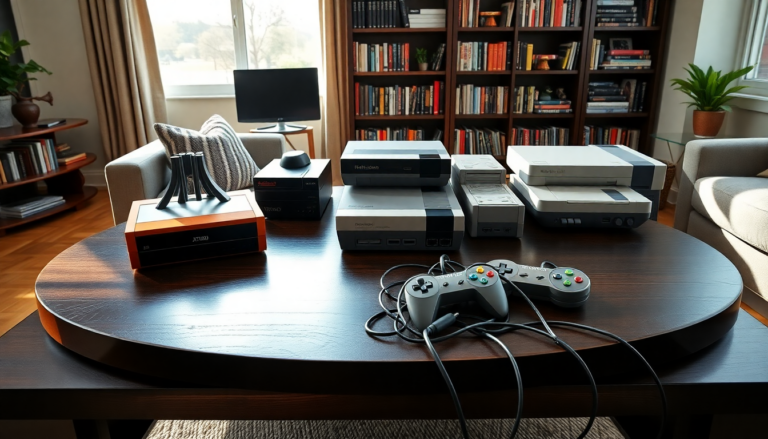Argomenti trattati
The landscape of video gaming has undergone a remarkable transformation over the past fifty years. From the simple beeps of early arcade games to the breathtaking graphics of today’s consoles, the evolution of gaming systems is a story of innovation and cultural significance. But what exactly has driven this change? This article explores 15 consoles that not only changed how games are played but also how they are perceived by society.
The Birth of Home Gaming: Atari 2600
In 1977, the Atari 2600 burst onto the scene as the first major home gaming console, sparking a paradigm shift in the video game industry. Prior to its launch, most gamers flocked to arcades for their gaming fix. The Atari 2600 changed all that by bringing the gaming experience into living rooms, allowing families to bond over classics like Pong and Adventure. Its cartridge-based design was a game-changer, enabling players to swap games—a model that still holds strong today.
However, the industry faced a major setback during the infamous 1983 video game crash. Retailers were hesitant to stock gaming products, haunted by past failures. This challenging environment set the stage for Nintendo’s NES, which revitalized the market through strict quality control and iconic titles like Super Mario Bros. This system not only restored faith in home gaming but also established Nintendo as a formidable force in the industry.
Nintendo’s Dominance and the Rise of Competitors
Nintendo’s influence didn’t stop there. Enter the Game Boy, which redefined portable gaming. While other handheld consoles might have boasted superior graphics, the Game Boy’s affordability, impressive battery life, and robust game library—including the timeless Tetris—proved that engaging gameplay trumps technical specifications every time.
But competition was heating up fast. Sega introduced the Genesis with a bold marketing campaign that directly challenged Nintendo’s reign, igniting the legendary console wars. This rivalry pushed both companies to innovate like never before. Nintendo’s counterattack came in the form of the Super Nintendo Entertainment System (SNES), a console that showcased remarkable technical capabilities and immersive storytelling through beloved titles like The Legend of Zelda: A Link to the Past.
The Entry of New Players and Innovations
Fast forward to 1995, when Sony entered the gaming arena with the PlayStation, shaking up the established norms. By embracing CD-ROM technology, the PlayStation delivered cinematic experiences that captivated gamers. Its strategic focus on third-party developers resulted in a diverse library that appealed to a wide audience.
Meanwhile, Nintendo launched the N64, emphasizing local multiplayer gaming with its innovative controller. Despite its limitations, the N64 brought friends together, creating memorable social experiences that defined a generation.
Then came the Dreamcast. Although it was ahead of its time with online capabilities and impressive graphics, it struggled due to Sega’s previous missteps. Its untimely demise, however, paved the way for future innovations in online gaming.
It was Sony’s PlayStation 2 that eventually became the best-selling console of all time, combining DVD playback with a massive game library to cater to both hardcore and casual gamers alike.
Modern Innovations and Market Expansion
Microsoft’s foray into console gaming with Xbox Live revolutionized online gaming, creating a more connected multiplayer experience. The original Xbox introduced hard drive storage, enhancing the gaming experience by eliminating the need for memory cards.
Meanwhile, Nintendo’s DS dazzled with its dual screens and touch controls, attracting a broader audience. The phenomenal success of the Wii, with its motion-controlled gameplay, highlighted the power of accessibility over raw specifications, reaching demographics that the gaming industry had previously overlooked.
As we moved into the era of the PS4, Sony refined digital distribution and social features, resulting in a user-friendly experience that solidified its dominance in the market.
Finally, the Nintendo Switch combined the best of both worlds—home and portable gaming—proving that creativity and unique hardware can thrive in a competitive landscape.
These consoles have been more than just gaming devices; they have shaped culture, created communities, and highlighted the significance of interactive entertainment. As we look forward to future innovations, it’s clear that the foundations laid by these 15 consoles will continue to influence the gaming world for years to come. So, what will the future hold for gaming? Only time will tell.

